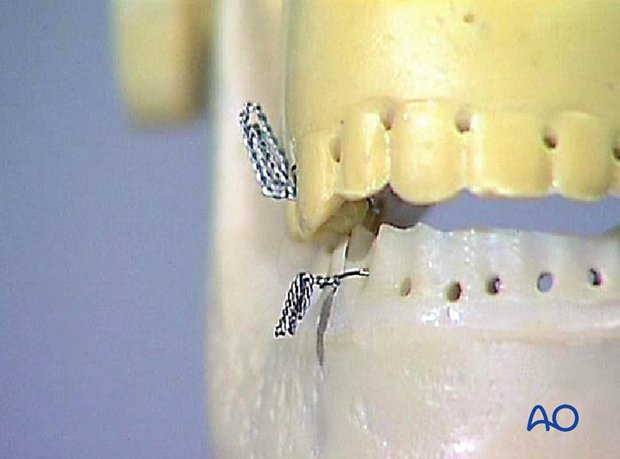Maxillomandibular fixation (MMF) - Ernst ligatures
1. Teaching video
Maxillomandibulary fixation (MMF) - Ernst ligatures
2. Principles
Indication
The main indications for Ernst ligatures are:
- temporary fixation before definitive operative treatment.
- intraoperative MMF for simple fractures.
Contraindication
Ernst ligatures do not provide adequate stability when dealing with complex fractures.
General considerations
There are essential points to consider before starting:
- The occlusion must be checked.
- In patients with jaw malformations (dysgnathia), it may be impossible to use Ernst ligatures.
- Mobile teeth should not be included in the ligatures.
- The ligatures of the upper and lower jaw must be placed in opposite, symmetric positions for correct immobilization.
- There is a risk of operator stick injuries from patients with infectious diseases.
- Ligatures can cause damage to the periodontium.

3. Ligature application
General consideration
An Ernst ligature is based on two teeth in contact in the same segment of the dental arch.
When possible, the premolars are used in the maxilla and mandible.
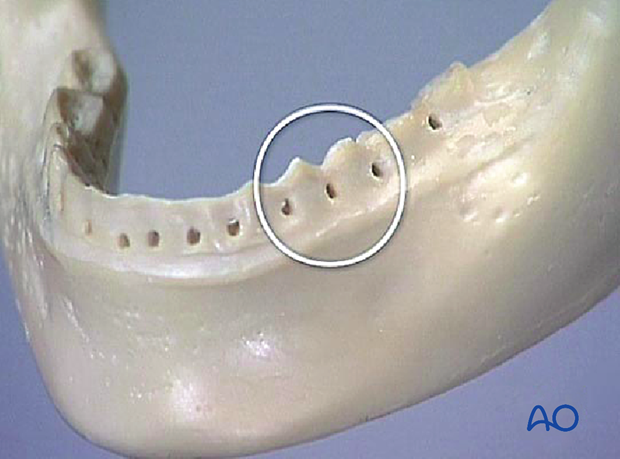
Wire passing
Use a 0.4 mm wire of approximately 15 cm length.
Here one end of the wire is passed through the interdental space between the first molar and second premolar (nr. 6 and nr. 5).
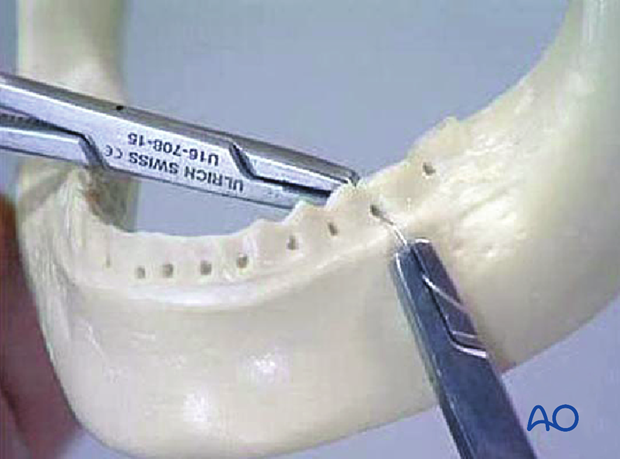
Thread it back from the lingual to the buccal side via the interdental space of the two premolars (nr. 4 and nr. 5).
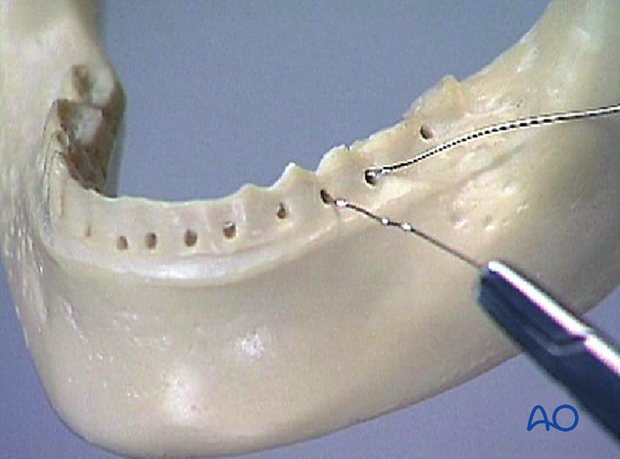
Pass the other end between the first premolar and canine (nr.4 and nr. 3).
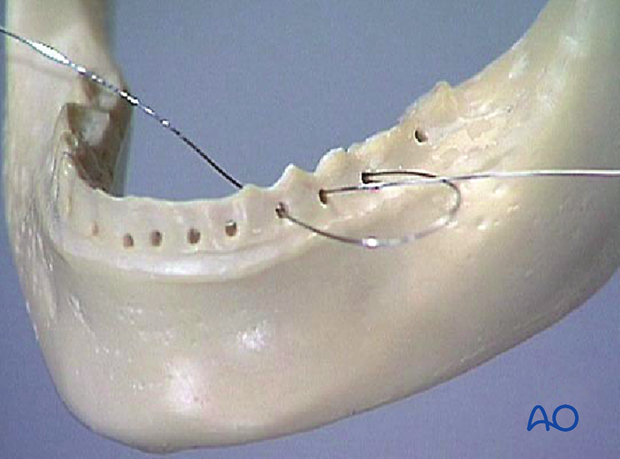
Closing the loop
This end also goes through the interdental space between the two premolars (nr. 4 and nr 5).
One wire end must pass below, and the other end must pass above the horizontal portion of the wire on the buccal side.

Tighten the wire
Tighten the wire with the wire needle driver, twisting it in a clockwise direction.

Add ligatures in the same way in the other three sections of the dental arches to form two symmetrical pairs.
It is important to preserve wire ends of at least 4-5 cm in length.
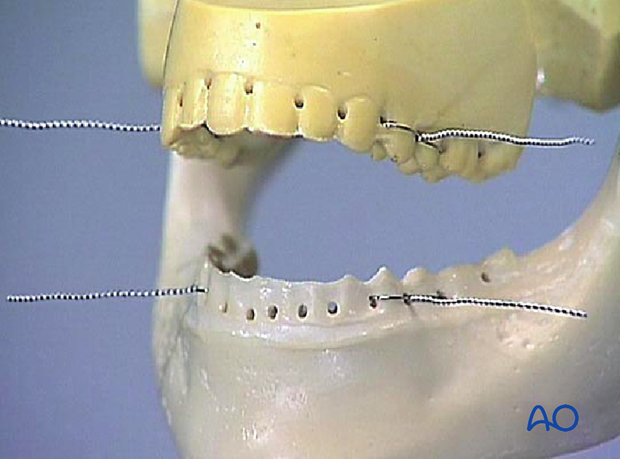
4. Fixation of occlusion
Combining the wires
After assuring correct occlusion, twist the wire ends of each pair of ligatures together using the needle driver
Take care at this point not to break the wires; otherwise, the procedure would have to be started again.

Cut the wire ends and bend them towards the teeth to protect the oral mucosa and the operator from accidental injuries.
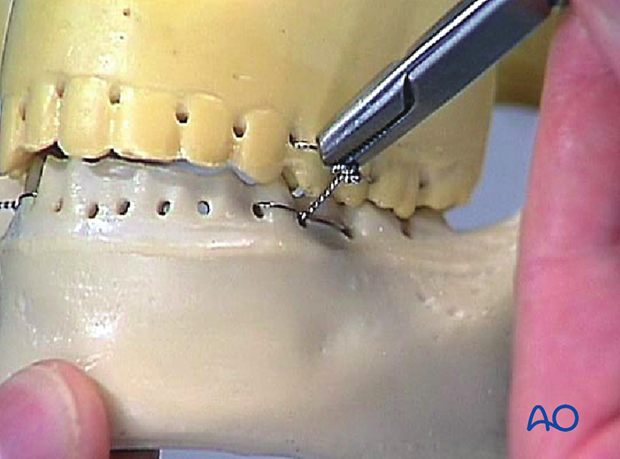
Additional methyl methacrylate (MMA)
Additional stabilization can be obtained by using methyl methacrylate to reinforce the ligature.
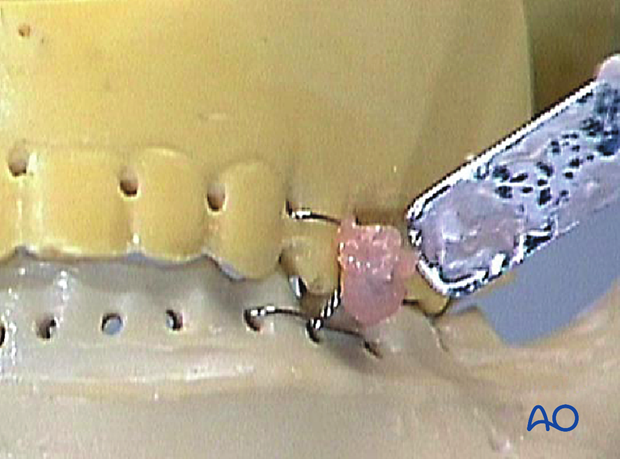
Place the methyl methacrylate around the wire. Use monomer for the final molding.

5. Occlusal guidance
If complete immobilization is not tolerated or if less stability is needed, elastics can be used.
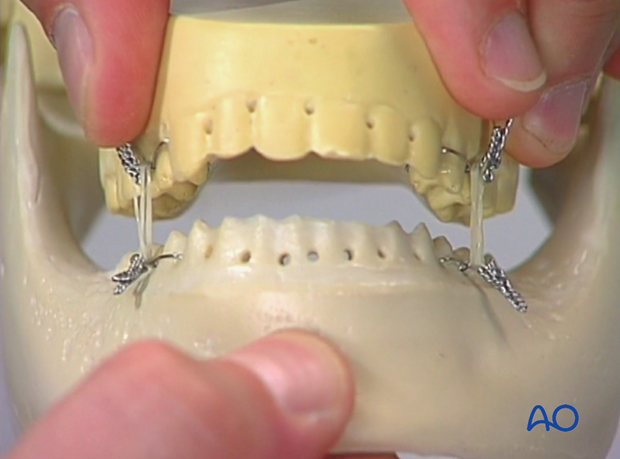
To accommodate elastics, bend together the wire ends …
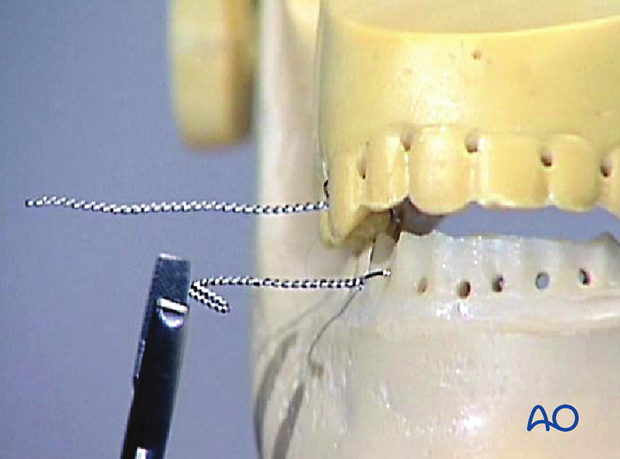
…to form little hooks.
